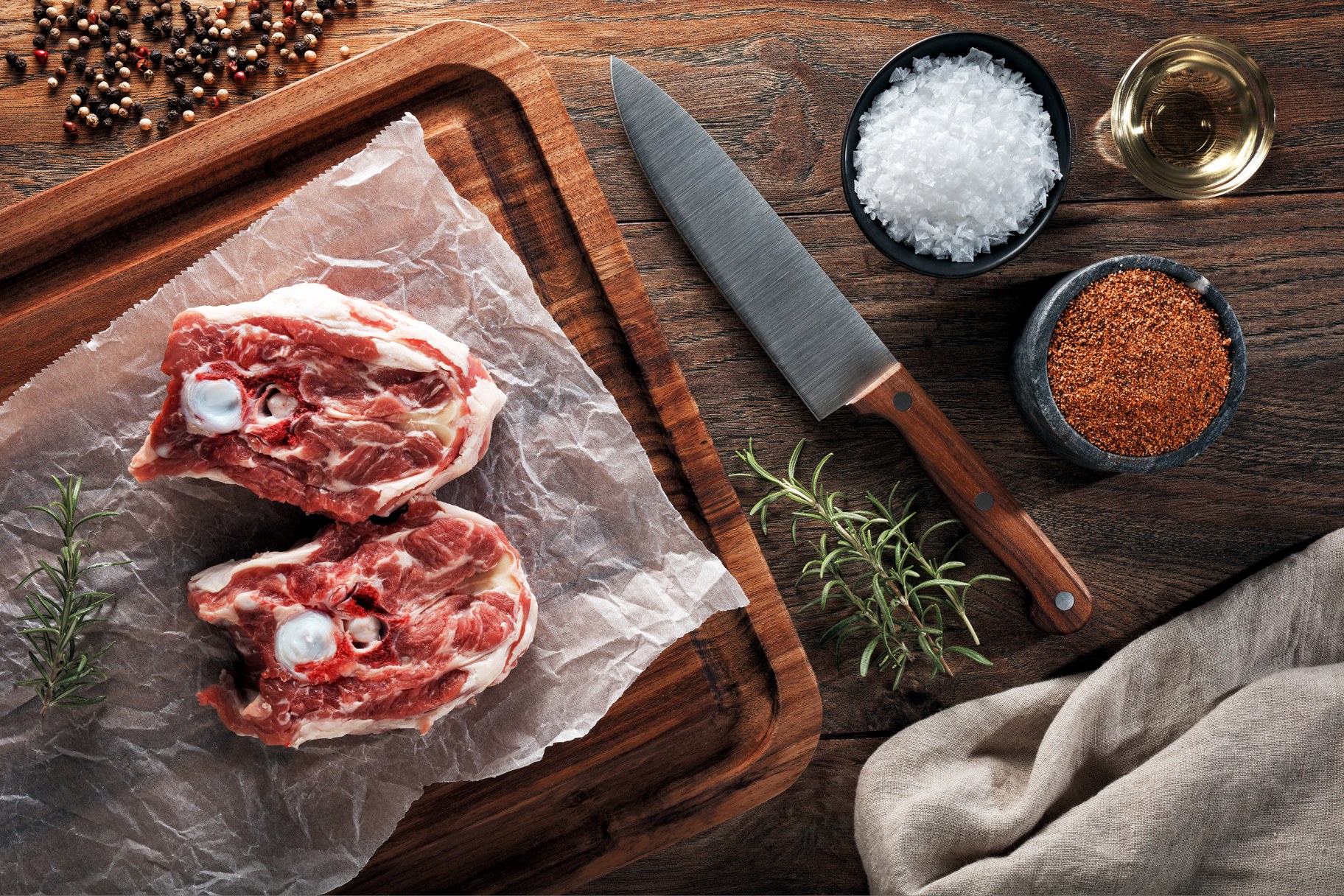Every year before St. Patrick’s Day, the media focus is on Guiness, Irish coffee and corned beef. But Irish stew made with lamb — the way it should be — is a perfect low and slow braise for a still nippy spring evening. It’s been a staple of Irish cooking for centuries because with sheep and root vegetables readily available, it was and still is an economical and dependable way to feed the family. But like many recipes that started out simply, the variety of ingredients and ways to put it together are prodigious. There are versions made with beef, a heresy, with the meat braised in water, broth or Guiness. Some add raisins (why?) or barley to the pot. That I could embrace. But here’s what I suggest.

Lamb neck is a good cut for Irish stew because it needs long, slow cooking. Photo by Shutterstock.
The lamb should be a cut meant for long, slow cooking. If you can get a lamb neck, go for it. They have bones for flavor and after that long simmer, a surprising amount of meat. If you like a richer broth and a gelatinous texture, try the breast of lamb. If you decide to go with either of these meats, give your specialty butcher a call several days or even a week in advance to order. But call around. I found lamb neck at Vons recently. If you want to make procuring the meat easier, just use the shoulder. Of course you may use a combination of cuts, just avoid tender chops. They would be a waste of money and the wrong cut for a long cooked dish.
The next non-negotiable ingredient for your stew is the potato. No surprise there. Some chefs call for “floury” potatoes like a russet, but I like a bit of a mix. Russets can break down a bit, which adds thickness to the broth, but particularly if you shop at the farmers markets, we have access to lovely fresh and varied varieties. So you might want to add some sliced russets for the purpose of breaking down and thickening the stew along with another variety that will maintain its integrity.
I can’t make a stew without onions, so I’m happy that they are considered essential as well. As for carrots, you might want to roast them separately or add them the last 20 minutes of cooking so they still have some integrity. I love the flavor of celery, but I wouldn’t use it in this stew. Instead I’d add a parsnip or celery root cut into pretty big pieces. And as for seasoning, salt and pepper of course, but maybe one or two fresh thyme sprigs or just a pinch of dried whole leaves. You just want the smallest hint of the herb. And if you want to brighten the look of the stew add a couple tablespoons of chopped parsley toward the end of cooking.
If you’re looking for a recipe, I really love how The Guardian’s Felicity Clarke breaks down how to make the classic Irish stew.
